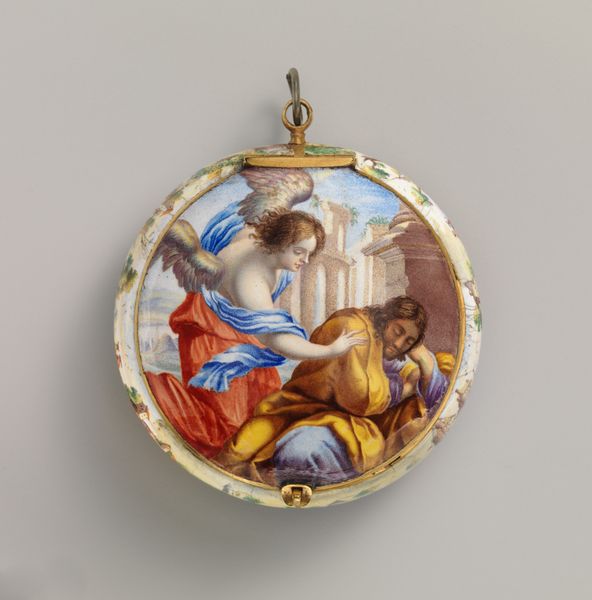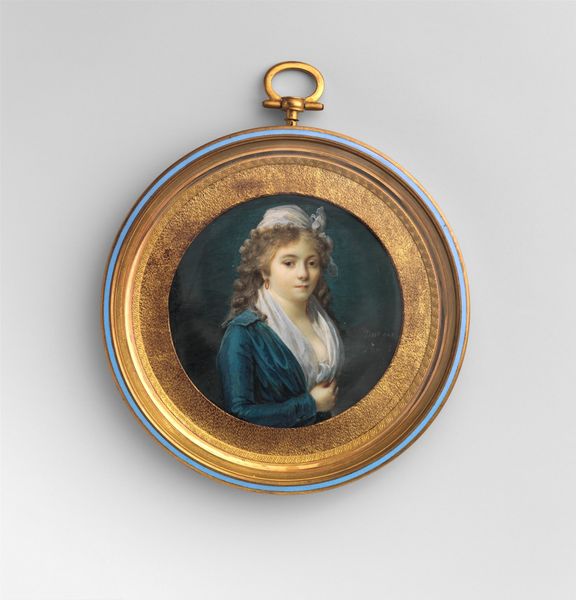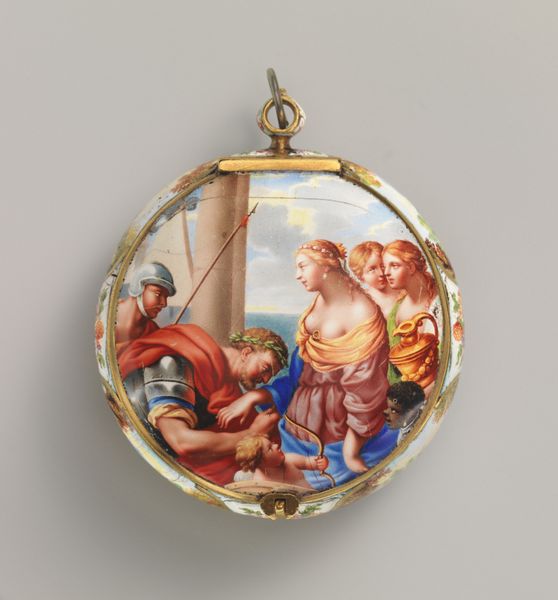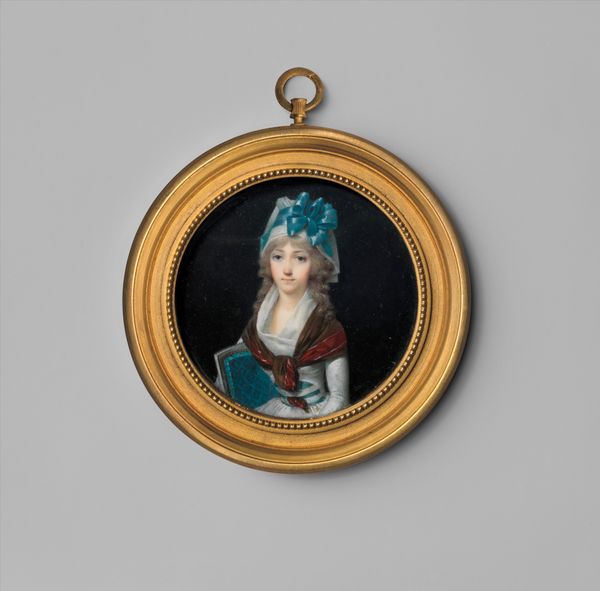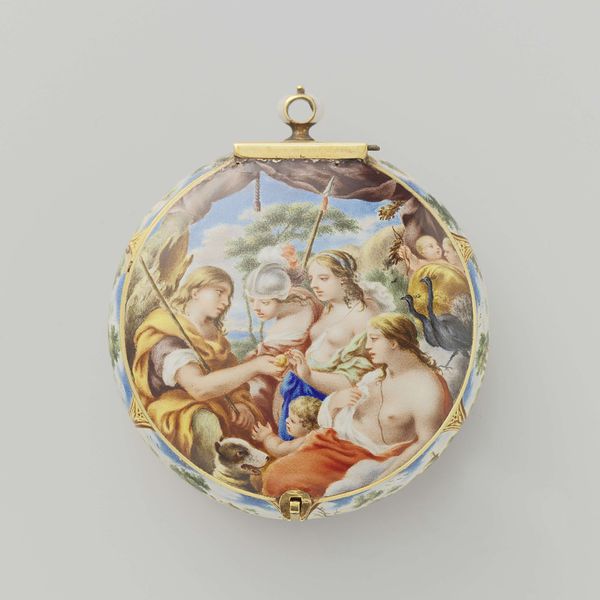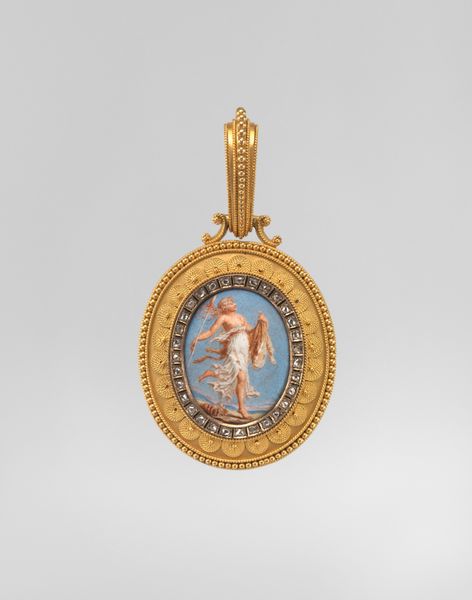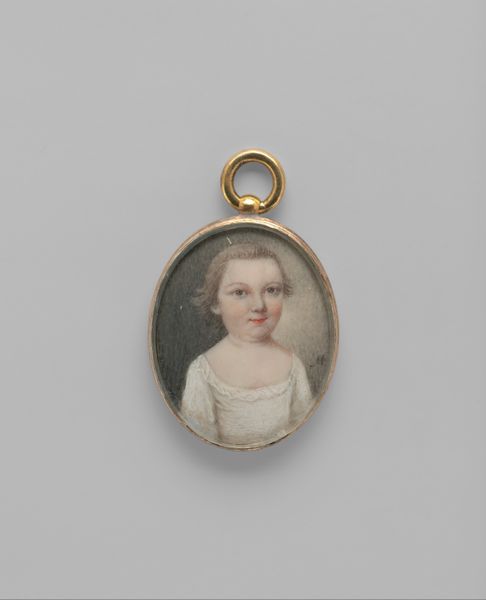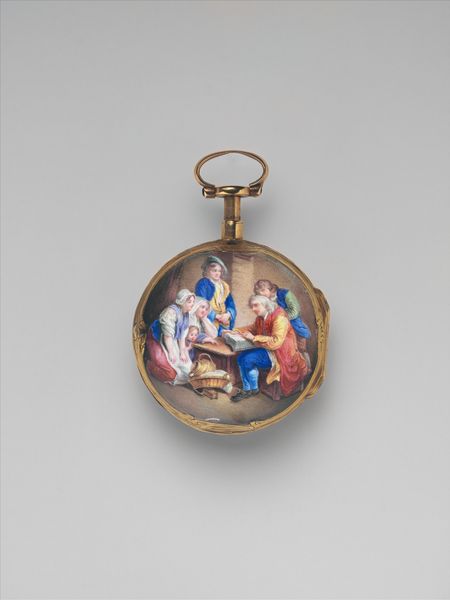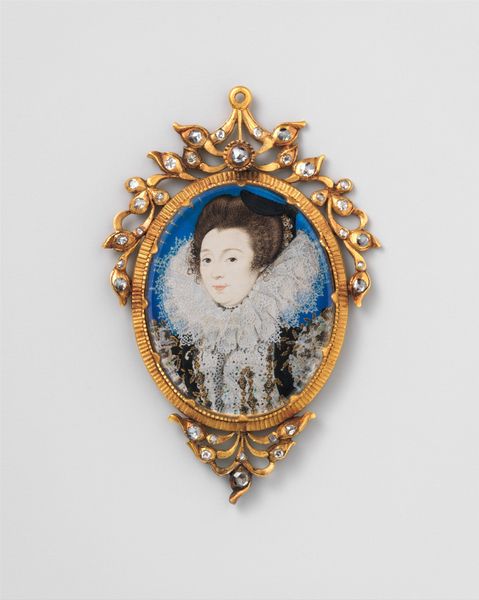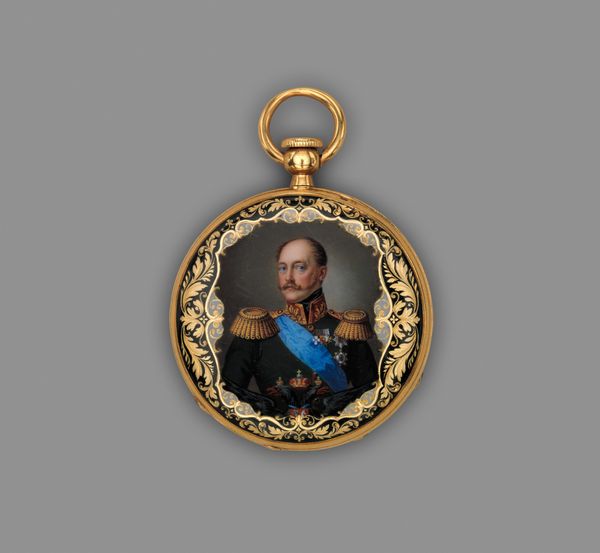
painting, sculpture, enamel
#
portrait
#
painting
#
sculpture
#
enamel
#
decorative-art
#
rococo
Dimensions: Diameter: 1 3/4 in. (4.4 cm)
Copyright: Public Domain
This enameled watch and case was crafted by John Ellicott in 18th-century England, a period defined by the consolidation of aristocratic power and burgeoning industrial capitalism. The watch’s miniature scene depicts a young woman holding an older man, seemingly captive behind bars. It’s a visual quotation from the classical story of Aristotle and Phyllis, a tale of female cunning besting male intellect. Through the circulation of popular imagery, this emblem of the "power of women" became widely available in printed books, paintings, and decorative objects. These historical and visual references point to this watch’s function as a commentary on gender roles and societal hierarchies. It serves as a reminder of how cultural narratives, mediated through decorative arts, engage with and reflect on the social structures of their time. To understand this piece fully, research into 18th-century social mores and the history of miniature painting is essential.
Comments
No comments
Be the first to comment and join the conversation on the ultimate creative platform.


